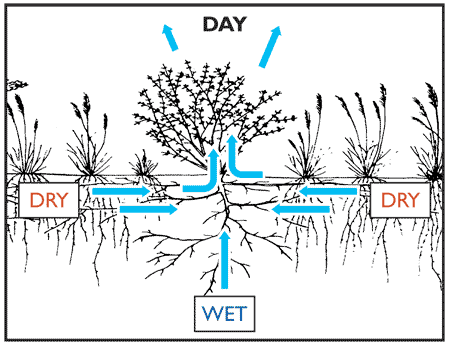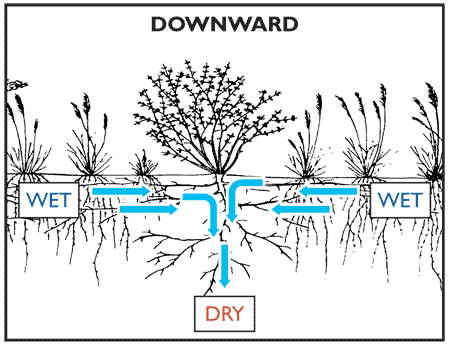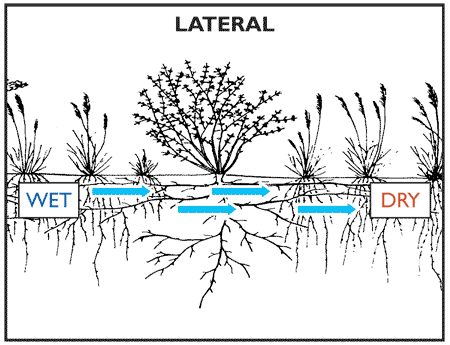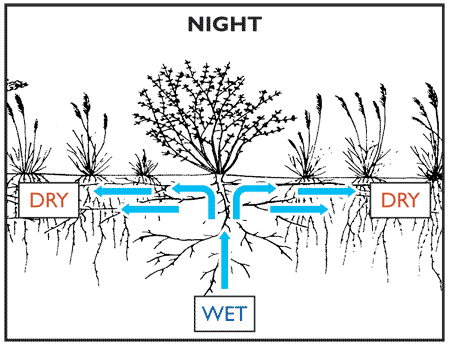RE: Hydraulic Redistribution and Tree Roots
Dear Elliot,
With regard to rooting depth and root system architecture, my impression is that most people are focused on fine roots with the tacit assumption that these are the only roots that contribute significantly to bulk water uptake by trees. It is indeed true that roughly 90% of fine roots occur in the upper meter across a broad range of vegetation types. However, it is also true that many woody species, including Pacific Northwest conifers, have roots that extend several meters deep. Our research clearly shows that these deep roots are responsible for the majority of water uptake by many PNW conifers during the summer drought period. In many stands, tree water use remains relatively stable throughout the summer, yet less than 20% of the water is taken up from the dry layers in the upper half meter. Most of the water is being taken up from depths as great as 2 meters or deeper. This leads one to the conclusion that coarse woody roots are also important for water uptake.
As for hydraulic redistribution, our research in the PNW and Braziliann savannas has shown that on average, about 0.15 mm of water per day is moved into drier upper soil layers. This is not very much in terms of its contribution to total evapotranspiration, but it plays a critical role in delaying soil drying to the point that finer roots in the upper layers lose hydraulic conductivity from xylem embolism. Hydraulic redistribution commences at the critical point of the soil moisture release curve where soil water potential begins to plummet with minute changes in soil water content.
With regard to the second question, it is difficult to infer maximum rooting depth from the kinds of data usually gathered in studies of hydraulic lift. What I think we can say from our research on PNW conifers is that the roots penetrate to depths greater than 2 meters and that some of the hydraulically-lifted water comes from 2 meters or deeper. Functional rooting depth is often estimated by doing stable hydrogen or oxygen isotope analyses of soil and plant xylem water, but this is a whole other can of worms because the results can be ambiguous. If you want some of these types of references, I can provide some. I don't believe much has been done with PNW species in this regard. Some of the species we have been working with in Brazil send roots down to at least 8 meters. It seems probable that the roots involved in uptake of water that gets hydraulically redistributed are rather coarse as most studies have indicated that there are hardly any fine roots below about 0.5 to 1 meter. In our work, we have observed that tree water uptake remains high even after the surface layers containing fine roots have dried to a level that would prevent further water uptake, implying that the bulk of uptake is coming from coarser deeper roots during drought periods.
I hope these comments and the attachments are helpful.
Sincerely,
Frederick Meinzer
Research Team Leader
Ecosystem Processes Program
USDA Forest Service
Forestry Sciences Laboratory
3200 SW Jefferson Way
Corvallis, OR 97331
For more information: www.fs.fed.us/pnw/publications/index.shtml
Hydraulic Redistribution



